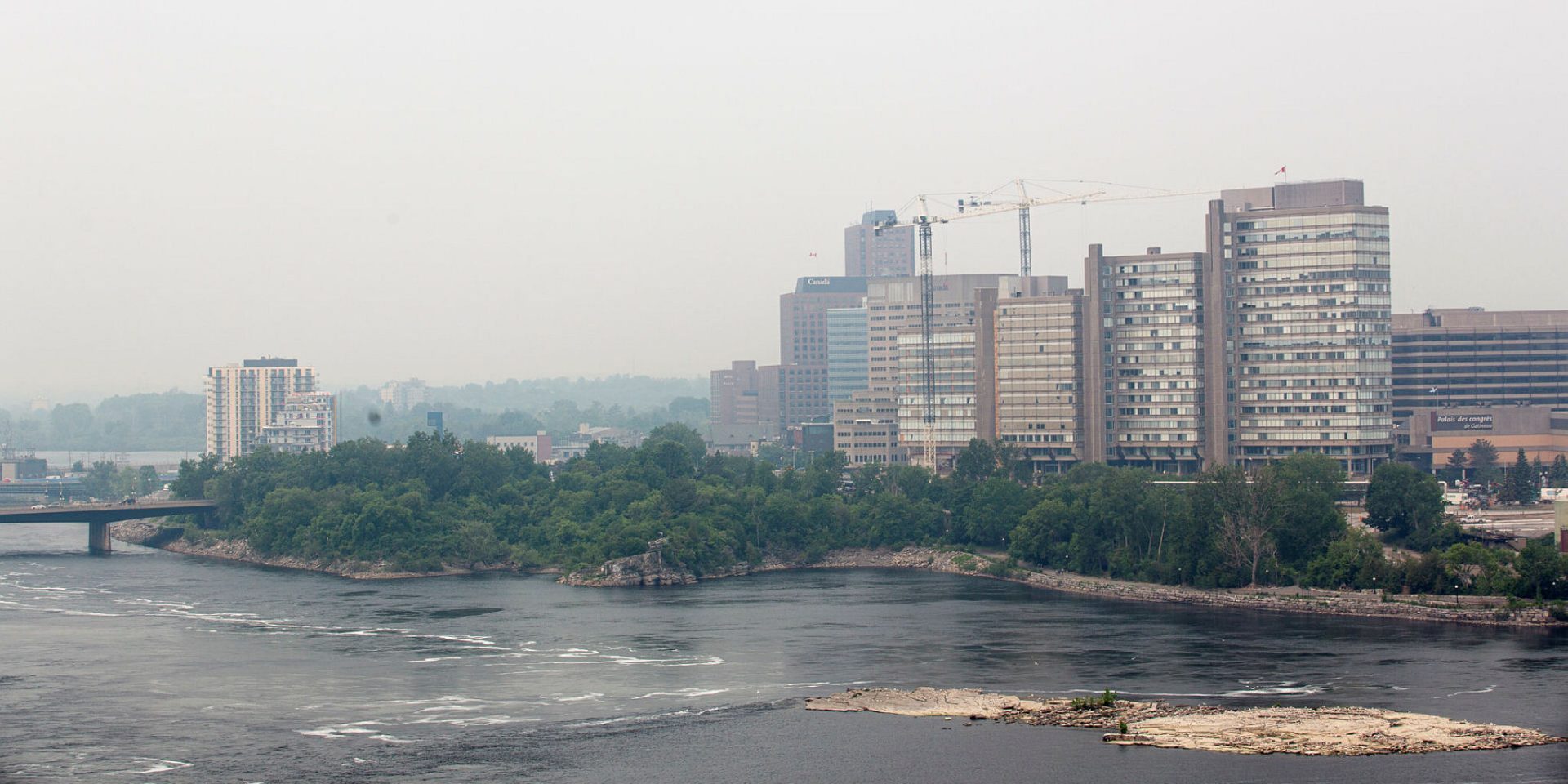MPs, experts say costs linked to frequency of wildfires, severity of weather events to increase without more climate action

Following the most destructive wildfire season ever recorded that saw many parts of the country cloaked in smoke, the warmest summer in more than three quarters of a century, and major flooding damage to property last year, MPs and experts say these events are not only costly, dangerous, and having direct effects on what can even be insured at this point, but are also affecting the viability of the resource sector itself.
The Office of the Chief Scientists of Canada called the 2023 wildfire season “the most destructive ever recorded,” with 16.5 million hectares of land burned. Canadian Forest Services scientist Jonathan Boucher said “there’s no question, extreme weather, record high temperatures and dry conditions caused by climate change intensified this year’s wildfire crisis,” according to a writeup on Canada’s record-breaking wildfires in 2023 posted on the government’s website.
That’s double the previous record, something which Yan Boulanger, a research scientist in forest ecology at Natural Resources Canada, called “shocking.”
“The word ‘unprecedented’ doesn’t do justice to the severity of the wildfires in Canada this year,” wrote Boulanger in the government’s writeup.
Statistics Canada recently opened an invitation to take part in a flood awareness consultative engagement, led by Public Safety Canada, to create a national digital resource to inform Canadians of their flood risk, and to provide information to help better prepare for and mitigate against the impacts of flooding.
University of Waterloo professor Blair Feltmate, who is also head of the Intact Centre on Climate Adaptation, said it’s no longer just a matter of floods being expensive, but there is also now a situation whereby 10 per cent of Canada’s residential housing market—1.5 million homes—are no longer insurable relative to flood risk.
“These are people who can’t get insurance coverage for their home for flood water in the basement,” said Feltmate, noting that the average cost of a flooded basement in Canada right now is $54,000.
In a speech to the House on May 30, NDP MP Laurel Collins (Victoria, B.C.), her party’s environment and climate change critic, said that wildfires cost Canada a billion dollars every season, that those costs are only going to go up, and families in areas at high risk for flooding and wildfires are finding it impossible to either insure their homes, or pay for their extremely high premiums.

Noting that the government provided $18.6-billion in financial support to fossil fuel and petrochemical companies in 2023, Collins said “enough is enough,” and that “it seems like the Liberals and the Conservatives do not actually care that thousands of people are going to be evacuated from their homes again this year.”
Janetta McKenzie, manager of the oil and gas program at the Pembina Institute, told The Hill Times that the cost of responding to the increasing frequency and severity of natural disasters over the last two or three decades is more than 100 per cent.
“This is not a trend that will slow down until we mitigate climate change,” said McKenzie.
Canadians also contended with dramatically cold temperatures in 2023, as well. According to the government, in late January and February, a lobe of the polar vortex dipped southward pushing from the North to West to East, with temperatures in the West averaging five to 15 degrees colder than normal for some of the lowest temperature departures in a generation.
Hydro utilities struggled to keep up with power demands, and outages affected over a million customers in Québec and Ontario, according to the report.
South of the border, ICF—an American global consulting and technology provider that provides climate resilience planning services and consulting—published a report last February that found the cost of climate change to a baby born in the United States could be around US$500,000 over their lifetime, and that when more uncertain factors are included, the costs could reach about $1-million. And a May 2024 ICF report found that the number of people in disadvantaged communities in the U.S. exposed to health-threatening heat waves each year could rise by an additional 25 million or more by 2050.
Insurance impacts need to account for greater population density, says ex-minister John Manley
Former Liberal deputy prime minister and finance minister John Manley told The Hill Times in an interview that it’s important when considering the insurance impacts of climate change to take into consideration the greater density.

“There are places that people are living now that they maybe didn’t live before, so the potential insurance losses are greater,” said Manley.
Manley recently penned an article in the Financial Post arguing that with Canada’s energy riches—including oil, natural gas, hydro generation capacity and nuclear technology—in addition to the country’s substantial mineral, forestry, agriculture and fishery resources, “we seem to have forgotten, never knew, or have become embarrassed” by this, “despite the fact that natural resources, and energy in particular, anchor our economy, our prosperity, and to some degree, our geopolitical relevance in the world.”
Manley said the the article was based on a presentation that he gave at an energy conference hosted by the C.D. Howe Institute, and the point he was trying to make was that global climate change is a very worrisome phenomenon, and Canada undoubtedly needs to do its part.
“But its part is to manage our demand side,” said Manley. “But on the supply side, there are actually some important things that we can do, including, particularly, with the natural gas reserves that we have, which are plentiful.”
“And because we are climate takers, not climate makers, and because that climate is a global issue, the single biggest thing that Canada could do is to make abundant natural gas available to displace coal-generated electricity around the world,” said Manley. “That’s the single biggest thing.”
Heather Exner-Pirot, senior fellow and director of natural resources, energy and environment at the Macdonald-Laurier Institute, keeps an eye on the viability and profitability of the resource sector.
Exner-Pirot noted that climate change “is affecting the bottom line, and they have to plan for it,” referring to businesses within the sector, noting that insurance costs and credit ratings are directly affected “because people do look at the risk.”
“It’s not abstract, it’s not an opinion,” she said. “The risk of a wildfire is a very serious business cost and business consideration that’s almost existential for these guys.”
mlapointe@hilltimes.com
The Hill Times
Top weather stories of 2023
David Phillips, a senior climatologist with the department of Environment and Natural resources, penned a piece on Canada’s top weather stories of 2023. Here are some of the important highlights:
- 184,493 square kilometres of woodland went up in smoke across Canada—the equivalent of nearly one and a half times the size of the Maritime provinces;
- More than 100 million Americans faced restricted under poor air quality due to the smoke from wildfires in Eastern Canada in June and May, followed by smoke in the fall from western and territorial wildfires;
- June 2023 was the hottest June ever, at 1.5 C above the 20th century average. Then came July—the warmest month ever recorded globally;
- Torrential downpours started on July 21 when a trough of low pressure moved into the Maritimes. Between 200 and 250mm of rain fell across Nova Scotia’s southwestern shore—the most significant rainfall event in the Halifax area since Hurricane Beth in August 1971;
- “Slow-moving, soppy storm systems” brought repeated rounds of rain and thunderstorms across Quebec in July, leading to one of the wettest months ever. By month’s end, Montréal and Québec exceeded 200 mm of rain, more than double their normal monthly accumulation; and
- Shortly before 2 p.m. on July 1, a tornado appeared 70 km north of Calgary. Rain and hailstones the size of golf and tennis balls and strong winds above 100 km/h accompanied the the twister, which ripped through 15 to 20 km of rural land about 670 m at its widest.






 LICENSING
LICENSING PODCAST
PODCAST ALERTS
ALERTS













